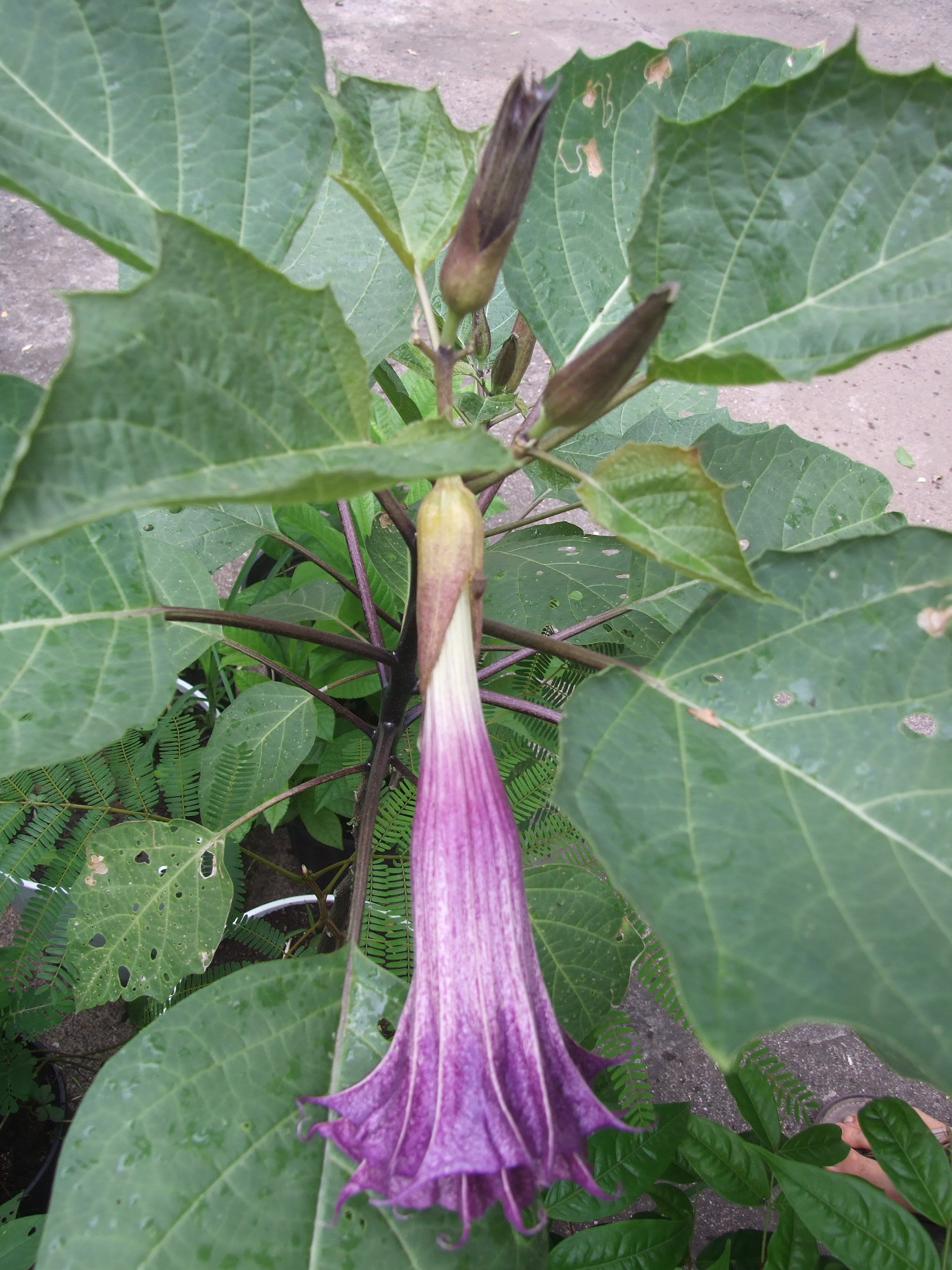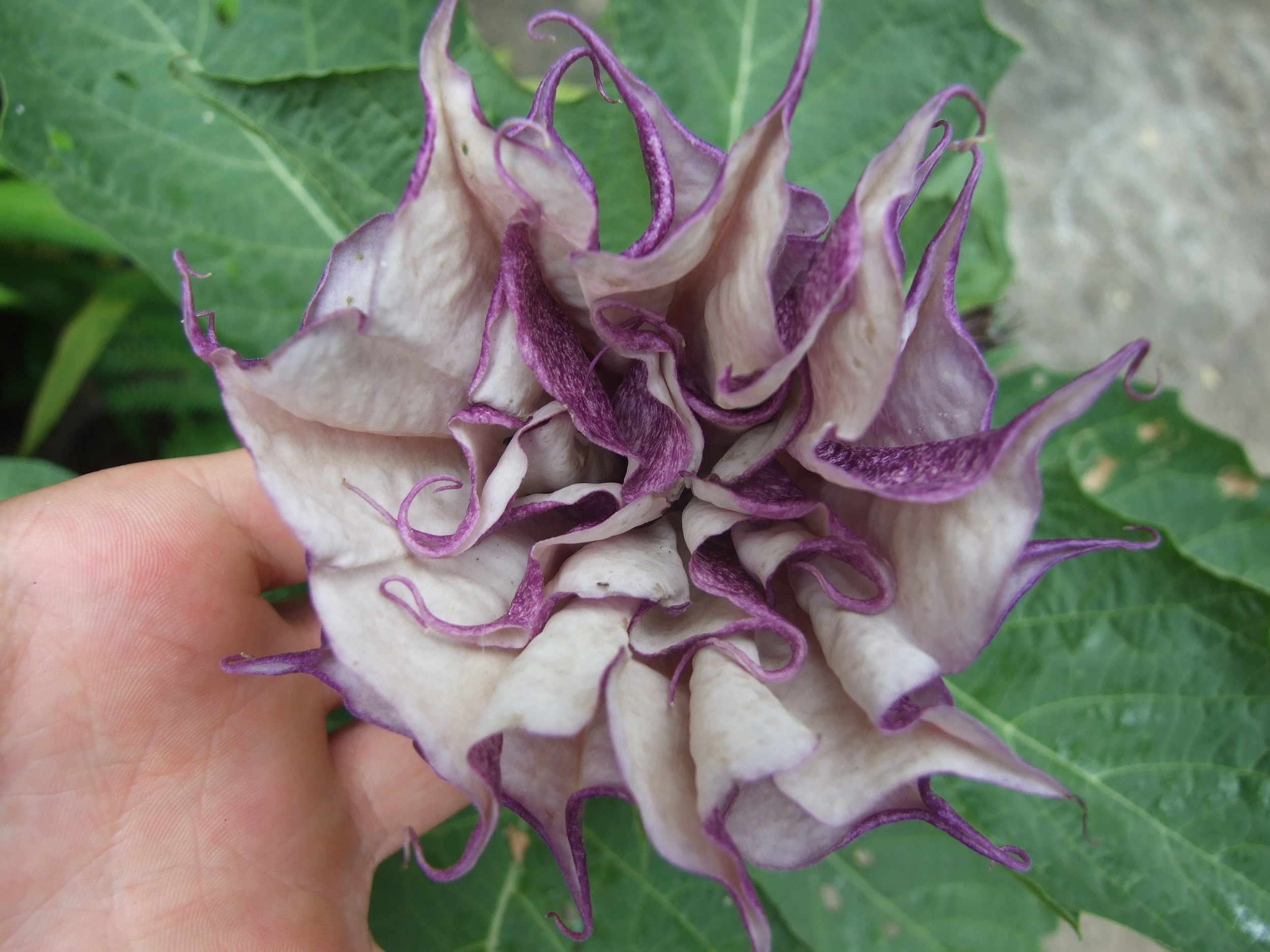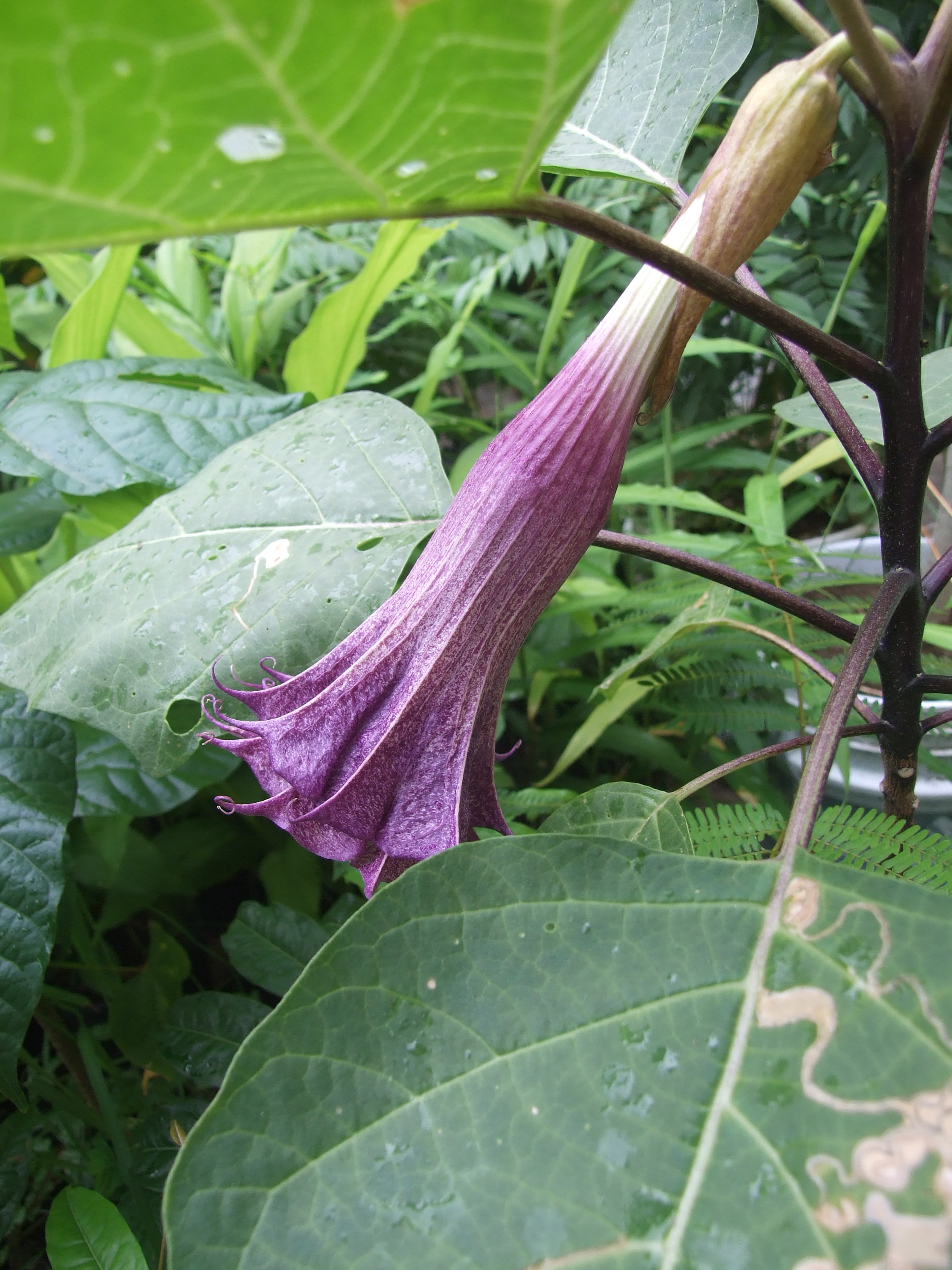BACKGROUND ORIGIN AND DISTRIBUTION
Datura metel is native to the east Asia, D. stramonium is thought to be from Tropical America. Both have a similar range of medicinal properties. Numerous Datura species have been documented as being used by the Aztecs and modern indians as an intoxicant and hallucinogen in the same way as other tropane plants of the New World. They have also been used in Europe for healing and divination since the 16th century.
USES AND ETHNOBOTANY
Datura metel is of similar toxicity to D. cerantocaula, D. ferox, D. stramonium, and D. innoxia. The plant is a fast growing, robust annual. Some find the aroma of the large white and/or purplish flowers to be objectionable, I think they smell good.
The thorny capsules are seed pods, containing numerous kineyshaped seeds.
Datura metel is a neurotoxin, hallucinogen, and considered to be extremely hazardous. Apparently, falling asleep beneath certain Datura and Brugmansia species can give rise to hallucinatory dreams.
Datura extracts have also been used (or misused) for infanticide, suicide, and murder.
Datura is used medicinally, mainly as an analgestic, used to relieve pain without loss of conscious.
The whole plant, but especially the leaves and seed, is anaesthetic, anodyne, antiasthmatic, antispasmodic, antitussive, bronchodilator, hallucinogenic, hypnotic and mydriatic. This species, and others in its genus, have a long history of use in ethnomedicine.
Caution is advised since a toxic dose can be very close to the medicinal dose. This plant should only be used under the guidance of a qualified practitioner. Many horror stories can recounted about naive individuals who decided to self-medicate with this and other closely related plants only to find themselves in a dark and scary place they never thought they would escape from, and sometimes they were right.
At low doses the alkaloids act as a depressant and sedative, but higher doses can lead to powerful "true" hallucinations, exitation, dry mouth, euphoria, confusion, insomnia, respiratory arrest and death.
The plant contains the alkaloids hyoscyamine, scopolamine, hyoscine and atropine. Atropine dilates the pupils and is used in eye surgery. Dried leaves contain .3 - 1 % tropane alkaloids (mainly hyoscyamine and scopolamine), seeds contain .6 % and roots .2 %.


